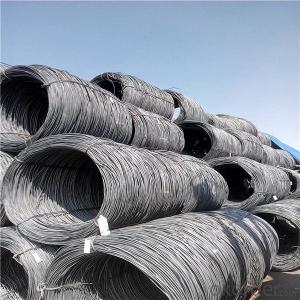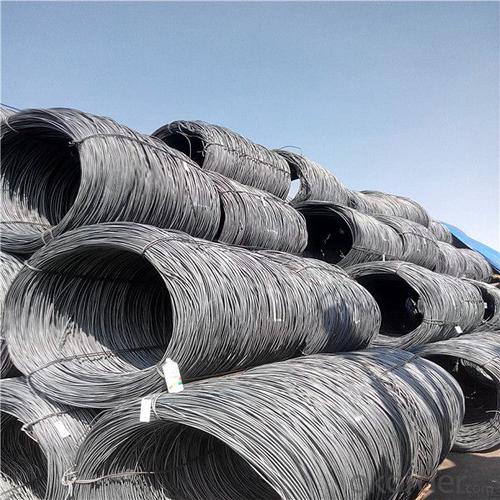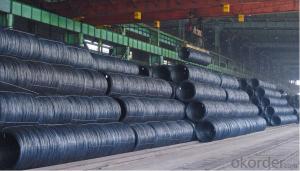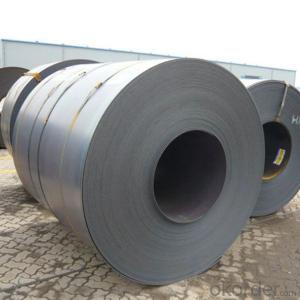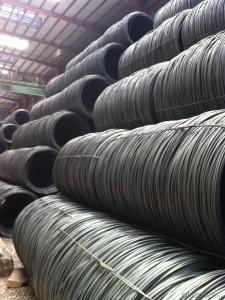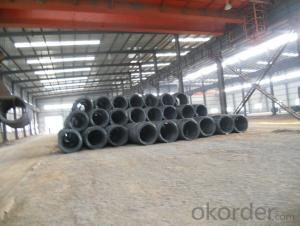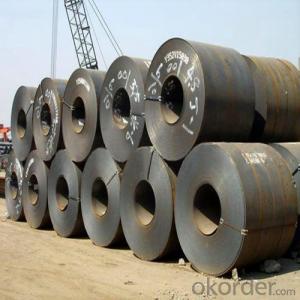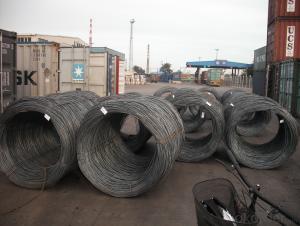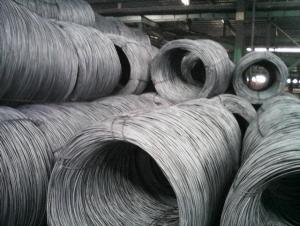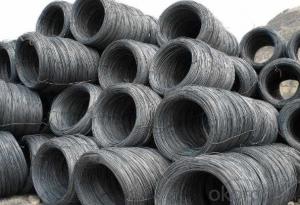Steel wire rod in coils buy direct from china manufacturer
- Loading Port:
- China main port
- Payment Terms:
- TT OR LC
- Min Order Qty:
- 100 m.t.
- Supply Capability:
- 17623 m.t./month
OKorder Service Pledge
OKorder Financial Service
You Might Also Like
Specification
Wire rod is a rolled alloy or nonalloy steel product, produced from a semi (e.g. bloom) and having a round,
rectangular or other cross-section. Particularly fine cross-sections may be achieved by subsequent cold
forming (drawing). Wire rod is wound into coils and transported in this form.
Wire rod is used for many different products. Depending upon how it is cold formed and heat treated, wire is used,
for example, to produce not only wire ropes, barbed wire, wire mesh and nails, but also springs, welded wire
mesh and reinforcement wire.
Our service:
(1) We cooperate with famous factories with advanced equipment and well trained workers.
(2) We can provide factory price with trading company service.
(3) We continuously work on the improvement of our processes, guaranteeing
consistently high standards of quality to keep none compensation.
(4) We guarantee 24 hours response and 48 hours solution providing service.
(5) We accept small order quantity before formal cooperation.
(6) We deliver the agreed quality at the agreed time, reacting to changes in
customer wishes in a flexible way.
(7) Due to our volume and selling power, we have excellent freight rates with
shipping lines.
(8) We strive to always be fair and honest in our dealings with customers.
(9) We strive to work together with customers to achieve much more than we can
achieve alone.
(10) Through our passion and commitment we aim to be a market leader in all our
key markets. To maintain our position as market leader we must continue to add
value in all that we do.
Product Description :
Standard | AISI, ASTM, BS, DIN, GB, JIS |
Material/steel grade | Q195-Q235,SAE1006B,SAE1006CR, SAE1008B, SAE1008CR, SAE1010B, SAE1018B, or according to customers requirements |
Wire Gauge | 5.5-12mm |
Coil weight | 1.8-2.1mts |
MOQ | 25MT |
Delivery Time | 15-30 days after receipt of L/C or deposit by T/T |
Packing | In coil and load in container, if large quantity, by bulk vessel; Can be packed as customers' special requirements |
Payment terms | 1).100% irrevocable L/C at sight. 2).30% T/T prepaid and the balance against the copy of B/L. 3).30% T/T prepaid and the balance against L/C |
Application | widely used in machinery parts, manufacturing industry, electronics industry, metal tools and others |
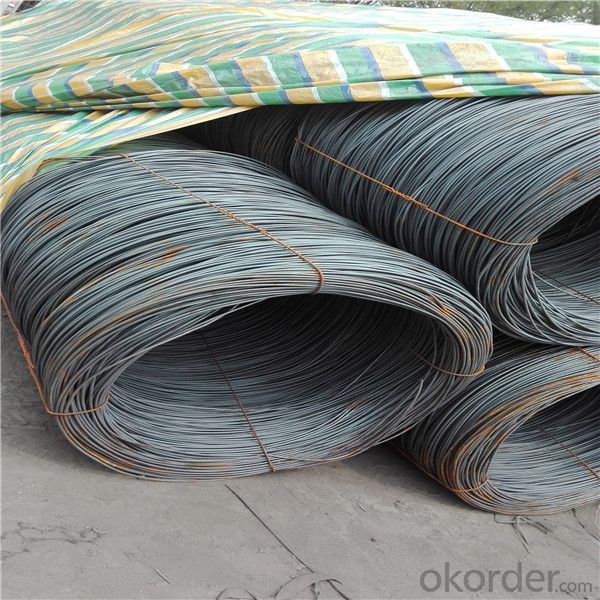
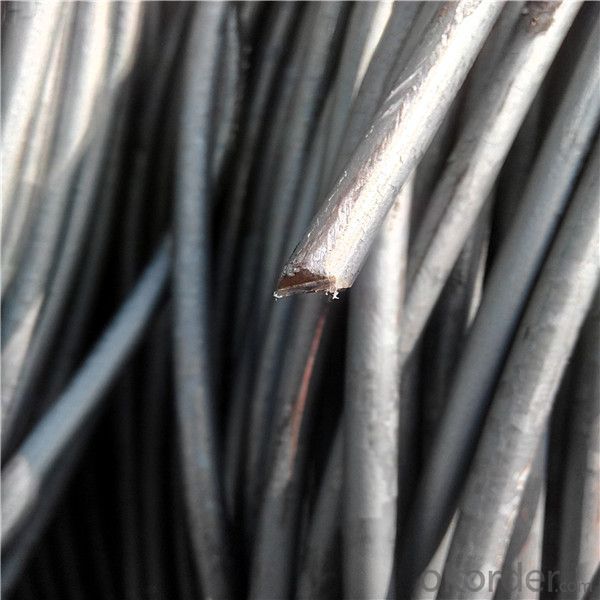
Application :
Mainly used in building and construction as binding wire, tie wire and baling wire; also can be make
for wire mesh.
Packing :
Hot-rolled wire rod is held in a unit with at least four steel straps in the
transverse direction and transported and stored without further packaging.
Before
the steel strapping is applied, the wire rod must be sufficiently compressed.
The strapping is fixed in the transverse direction with a single circumferential
strap so that the strapping does not slip and cause the coil to come apart.
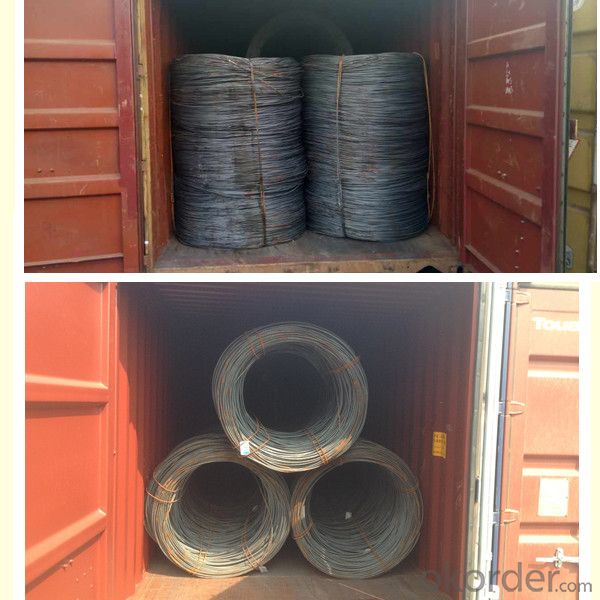
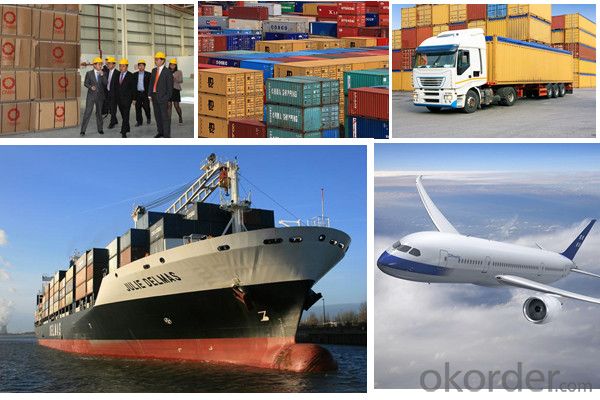
FAQ:
1.Q:Can you accept mixed order?
A: Yes, mixed acceptable .
2. Q: How can I buy CNBM products in my country?
A:Please send us an inquiry or email ,we will reply to you if there is distributor in your country
3. Q: Can we visit your factory?
A: Warmly welcome. Once we have your schedule, we will arrange the
professional sales team to follow up your case.
4. Q: How long does it take to get the product if i place an order?
A:With the process of your requirements,we will pack and deliver in 3
-7 days. If it is by sea shipment,it will take 15-45 days depending on different locations
- Q: What are the cost considerations of steel wire rod?
- The cost considerations of steel wire rod depend on several factors. Firstly, the price of raw materials such as iron ore and coal, which are used in the production of steel, can impact the cost. Fluctuations in these prices can affect the overall cost of steel wire rod. Additionally, the manufacturing process of steel wire rod involves various stages such as melting, refining, and rolling, which require energy, labor, and equipment. The efficiency of these processes and the associated costs can also contribute to the final price of steel wire rod. Furthermore, market demand and competition can influence the cost as well, as higher demand or intense competition may lead to price adjustments. Moreover, transportation and logistics costs, including shipping and handling, can also affect the final cost of steel wire rod.
- Q: What are the common standards for steel wire rod?
- The common standards for steel wire rod include specifications for chemical composition, mechanical properties, dimensions, and surface finish. These standards are set by organizations such as ASTM International, ISO, and national standards bodies. They ensure consistency and quality in the production and use of steel wire rod across different industries and applications.
- Q: What are the main factors influencing the choice of steel wire rod order lead time?
- The main factors influencing the choice of steel wire rod order lead time are demand and supply dynamics, production capacity, transportation logistics, and customer requirements. Firstly, demand and supply dynamics play a significant role in determining the lead time for steel wire rod orders. If there is high demand for steel wire rod products, manufacturers may have longer lead times due to increased production requirements and limited availability of raw materials. Conversely, during periods of low demand, lead times may be shorter as manufacturers can allocate resources more efficiently. Production capacity is another crucial factor. The lead time for steel wire rod orders depends on the production capacity of the manufacturer. If a manufacturer has limited production capacity, it may take longer to fulfill orders, resulting in longer lead times. On the other hand, manufacturers with larger production capacities can process orders more quickly, leading to shorter lead times. Transportation logistics also influence the choice of lead time for steel wire rod orders. If the manufacturer is located far from the customer or if there are logistical challenges, such as limited transportation options or customs clearance delays, the lead time may be longer. Efficient transportation networks and streamlined logistics processes can help reduce lead times. Additionally, customer requirements play a role in determining the lead time for steel wire rod orders. Some customers may have specific delivery deadlines or urgent requirements that need to be met. In such cases, manufacturers may prioritize these orders and provide shorter lead times to ensure customer satisfaction. Conversely, if customers have more flexible timelines, manufacturers may allocate resources to orders with shorter lead times. In conclusion, the main factors influencing the choice of steel wire rod order lead time include demand and supply dynamics, production capacity, transportation logistics, and customer requirements. Manufacturers need to consider these factors to determine an appropriate lead time that balances customer needs with operational capabilities.
- Q: What are the common recycling methods for steel wire rod?
- The common recycling methods for steel wire rod include melting and remolding the wire rod into new steel products, such as bars or coils, and using it as raw material in the production of other steel products. Additionally, the wire rod can be shredded and processed to extract any remaining non-ferrous materials, such as copper or aluminum, for separate recycling.
- Q: What are the main factors influencing the choice of steel wire rod packaging?
- When selecting packaging for steel wire rods, various factors come into play. These factors encompass the need for protection, transportation requirements, handling considerations, and storage demands. Protection is a major factor to be taken into account. Steel wire rods are vulnerable to damage caused by external elements like moisture, dirt, and corrosion. Consequently, the packaging must offer ample protection against these factors to ensure the product's quality and integrity. This might entail utilizing moisture-resistant materials such as plastic or coated paper and implementing measures to prevent rust and corrosion, such as applying anti-corrosion coatings. Transportation considerations also play a vital role in determining the appropriate packaging. Steel wire rods often undergo long-distance transportation via road, rail, or sea. The packaging needs to be robust enough to withstand the challenges of transportation, including potential impacts and vibrations. Additionally, it should be designed to facilitate easy loading and unloading, while minimizing the risk of damage during handling and transportation. The choice of packaging is also influenced by the storage requirements of steel wire rods. Depending on the storage conditions, whether indoor or outdoor, the packaging may need to provide additional protection against factors like sunlight, extreme temperatures, and humidity. Furthermore, stackability is important to optimize space utilization and prevent any deformation or bending of the wire rods. Other factors that may influence the selection of steel wire rod packaging include cost-effectiveness, sustainability, and compliance with regulations. Companies must consider the cost of packaging materials, their availability, and the overall packaging process to ensure alignment with their budget and operational efficiency. In addition, there is a growing emphasis on sustainable packaging solutions that minimize environmental impact, such as using recyclable materials or reducing overall packaging waste. Compliance with industry standards and regulations, including safety and labeling requirements, is also a significant consideration in choosing steel wire rod packaging.
- Q: What are the main regions for steel wire rod production?
- The main regions for steel wire rod production are Asia, Europe, and North America. Asia is the largest producer of steel wire rod, with countries like China, Japan, and India leading the way. China, in particular, holds the largest share of global steel wire rod production, thanks to its vast steel industry and strong domestic demand. Japan is another significant player in Asia, known for its advanced technology and high-quality steel products. India has also emerged as a major producer in recent years, driven by its growing infrastructure and construction sectors. In Europe, countries like Germany, Italy, and France are prominent steel wire rod producers. Germany has a long history of steel manufacturing and is known for its expertise in producing high-quality steel wire rod. Italy is also a significant player, specializing in stainless steel wire rod production. France, on the other hand, benefits from its strategic location and serves as a hub for steel wire rod distribution in Europe. North America is another important region for steel wire rod production, with the United States and Canada as key players. The United States has a well-established steel industry and is known for its advanced production techniques. Canada, although not as large a producer as the United States, still contributes significantly to the North American market. Overall, these regions dominate the steel wire rod production globally, with each having its own strengths and specialties. The demand for steel wire rod continues to grow, driven by various industries such as automotive, construction, and manufacturing, ensuring a strong market for these regions.
- Q: How is steel wire rod used in the manufacturing of wire rope assemblies for construction purposes?
- Steel wire rod is an essential component in the manufacturing of wire rope assemblies for construction purposes. Wire rope assemblies are widely used in construction for various applications such as lifting heavy loads, securing structures, and providing structural support. Steel wire rod serves as the raw material for producing the inner strands and outer strands of a wire rope assembly. These strands are made by twisting multiple individual wires together, forming a strong and durable rope. The wire rod used in this process is typically made from high-quality carbon steel, which provides the necessary strength and resilience required for construction applications. The manufacturing process begins with the steel wire rod being cleaned and coated with a lubricant to reduce friction during the twisting process. The wire rod is then drawn through a series of dies to reduce its diameter and increase its length. This drawing process helps to align the steel's grain structure, enhancing its strength and flexibility. Once the wire rod has been drawn, it is fed into a stranding machine where multiple wires are twisted together to form individual strands. These strands are then combined in a specific pattern to create the wire rope assembly, with the inner strands providing strength and the outer strands providing protection. The wire rope assembly is then subjected to various quality control measures to ensure it meets the required specifications for construction purposes. These measures may include testing for strength, flexibility, and resistance to corrosion. Once approved, the wire rope assembly is ready to be used in construction projects. In construction, wire rope assemblies made from steel wire rod are used for a wide range of applications. They are commonly used in cranes and hoists to lift heavy loads, providing a safe and reliable lifting solution. Wire rope assemblies are also utilized in the construction of suspension bridges, where they provide support and stability. Additionally, wire rope assemblies are used for securing structures, such as in the installation of safety barriers or anchoring systems. Overall, steel wire rod plays a crucial role in the manufacturing of wire rope assemblies for construction purposes. Its strength, durability, and versatility make it an ideal material for use in various construction applications, ensuring the safety and reliability of structures and equipment.
- Q: How are steel wire rods used in the production of electrical cables for power transmission?
- Steel wire rods are used in the production of electrical cables for power transmission as a reinforcement material. These wire rods provide strength and durability to the cables, allowing them to withstand the high tension and mechanical stress that occurs during power transmission. Additionally, the steel wire rods also enhance the conductivity of the cables, ensuring efficient and reliable energy transfer.
- Q: How is the steel wire rod market affected by technological advancements?
- Technological advancements have a significant impact on the steel wire rod market. These advancements have revolutionized the production process, resulting in increased efficiency, improved quality, and reduced costs. One of the key technological advancements that have influenced the steel wire rod market is automation. Automation has made the production process faster and more precise, reducing the reliance on manual labor and increasing overall productivity. This has led to increased production capacity and reduced lead times, allowing manufacturers to meet growing market demands. Furthermore, advancements in metallurgy and material science have led to the development of high-performance steel wire rods. These rods possess superior strength, durability, and flexibility properties, making them suitable for a wide range of applications. Technological advancements have enabled manufacturers to produce steel wire rods with precise chemical compositions and microstructures, resulting in improved mechanical properties and enhanced performance. Moreover, technological advancements have also facilitated the development of advanced testing and quality control methods. Manufacturers can now employ non-destructive testing techniques, such as ultrasonic testing and magnetic particle inspection, to ensure the quality and integrity of steel wire rods. These advancements have significantly reduced the risk of defects and failures, resulting in increased customer satisfaction and trust in the market. In addition, technology has also had a positive impact on the distribution and marketing of steel wire rods. E-commerce platforms and digital marketing strategies have made it easier for manufacturers to reach a wider customer base and promote their products globally. This has increased market competitiveness and facilitated the growth of the steel wire rod market. Overall, technological advancements have revolutionized the steel wire rod market by improving production processes, enhancing product quality, reducing costs, and enabling effective distribution and marketing strategies. As technology continues to advance, it is expected that the steel wire rod market will continue to benefit from further innovations, ensuring its sustained growth and competitiveness in the future.
- Q: What are the common production processes for neon-coated steel wire rod?
- The common production processes for neon-coated steel wire rod include wire drawing, cleaning and coating, curing, and cutting.
Send your message to us
Steel wire rod in coils buy direct from china manufacturer
- Loading Port:
- China main port
- Payment Terms:
- TT OR LC
- Min Order Qty:
- 100 m.t.
- Supply Capability:
- 17623 m.t./month
OKorder Service Pledge
OKorder Financial Service
Similar products
Hot products
Hot Searches
Related keywords
